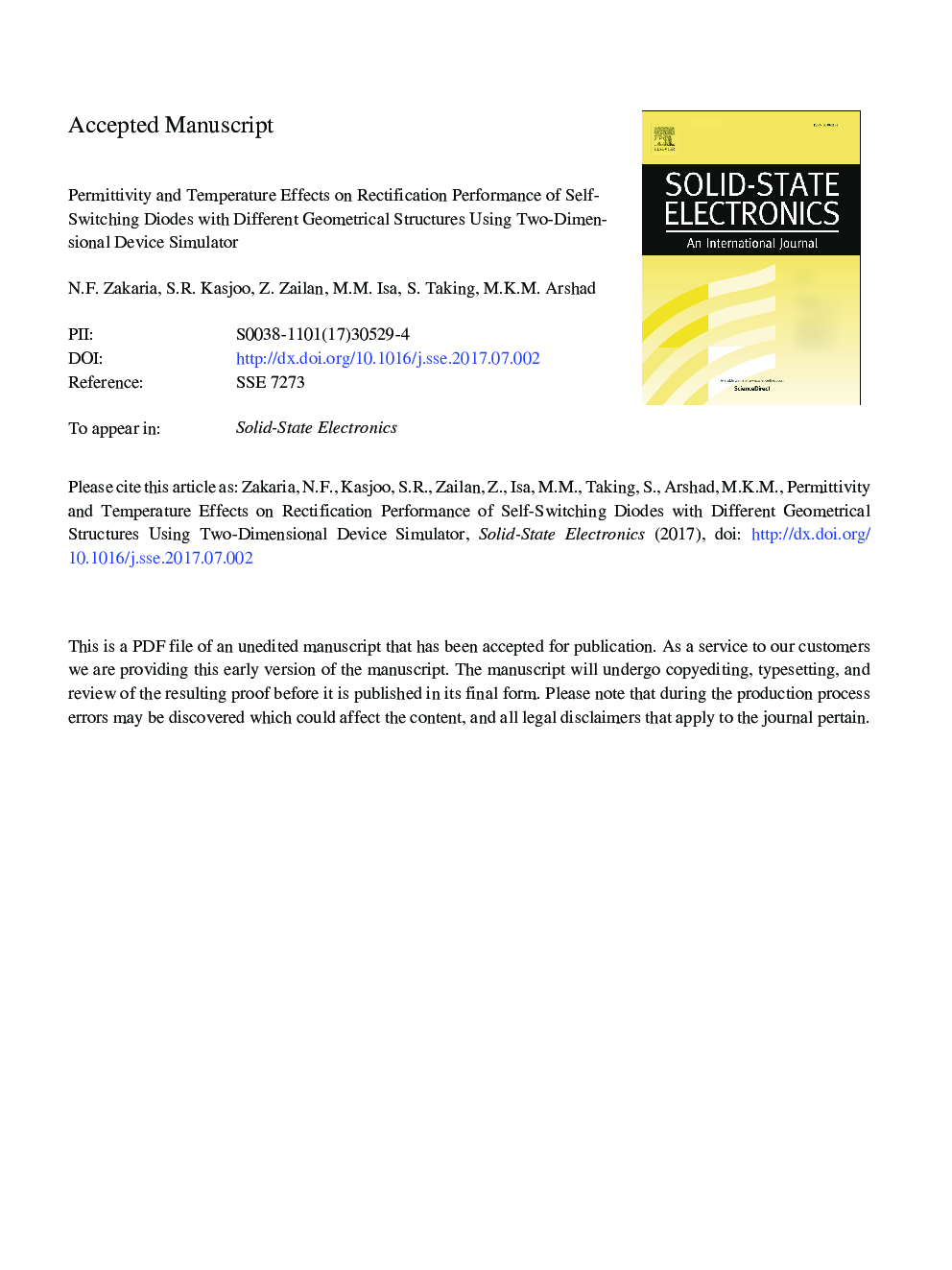| Article ID | Journal | Published Year | Pages | File Type |
|---|---|---|---|---|
| 7150676 | Solid-State Electronics | 2017 | 9 Pages |
Abstract
Characterization on an InGaAs-based self-switching diode (SSD) using technology computer aided design (TCAD) aimed for optimizing the electrical rectification performance of the device is reported. The rectifying performance is mainly contributed by a parameter known as the curvature coefficient which is derived from the current-voltage (I-V) behavior of the device. As such, the curvature coefficient of SSD was analyzed in this work, not only by varying the device's geometrical structure, but also by implementing different dielectric relative permittivity of the device's trenches, ranging from 1.0 to 10. Furthermore, the simulations were performed under temperature range of 300-600Â K. The results showed that increased temperature degraded the SSD's rectifying performance due to increased reverse current which can deteriorate the nonlinearity of the device's I-V characteristic. Moreover, an improved curvature coefficient can be achieved using silicon dioxide (â¼3.9) as the SSD trenches. The cut-off frequency of SSD with zero-bias curvature coefficient of â¼30Â Vâ1 attained in this work was approximately 80Â GHz, operating at unbiased condition. The results obtained can assist the design of SSD to efficiently operate as rectifiers at microwave and terahertz frequencies.
Keywords
Related Topics
Physical Sciences and Engineering
Engineering
Electrical and Electronic Engineering
Authors
N.F. Zakaria, S.R. Kasjoo, Z. Zailan, M.M. Isa, S. Taking, M.K.M. Arshad,
